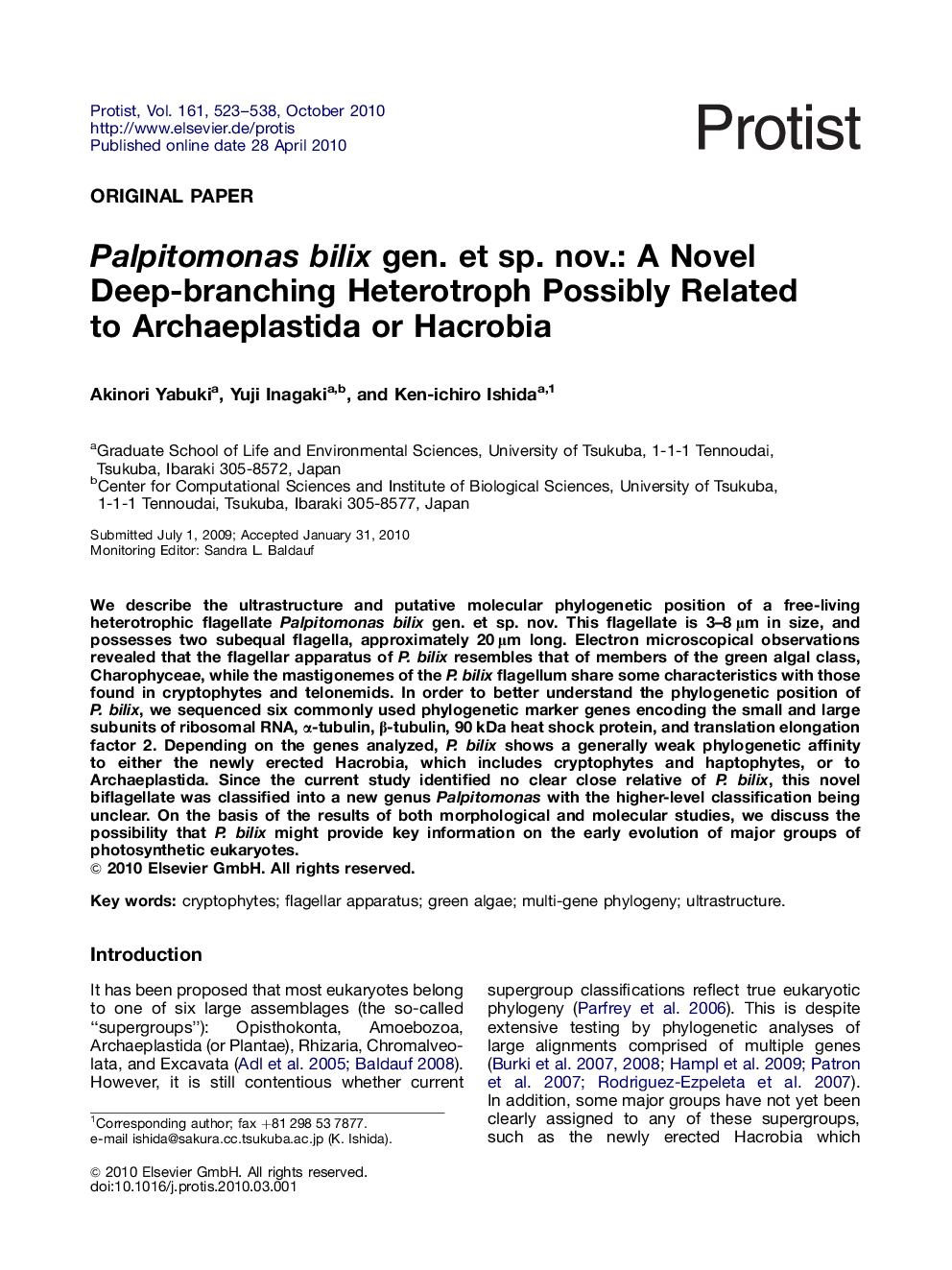| Article ID | Journal | Published Year | Pages | File Type |
|---|---|---|---|---|
| 2062274 | Protist | 2010 | 16 Pages |
We describe the ultrastructure and putative molecular phylogenetic position of a free-living heterotrophic flagellate Palpitomonas bilix gen. et sp. nov. This flagellate is 3–8 μm in size, and possesses two subequal flagella, approximately 20 μm long. Electron microscopical observations revealed that the flagellar apparatus of P. bilix resembles that of members of the green algal class, Charophyceae, while the mastigonemes of the P. bilix flagellum share some characteristics with those found in cryptophytes and telonemids. In order to better understand the phylogenetic position of P. bilix, we sequenced six commonly used phylogenetic marker genes encoding the small and large subunits of ribosomal RNA, α-tubulin, β-tubulin, 90 kDa heat shock protein, and translation elongation factor 2. Depending on the genes analyzed, P. bilix shows a generally weak phylogenetic affinity to either the newly erected Hacrobia, which includes cryptophytes and haptophytes, or to Archaeplastida. Since the current study identified no clear close relative of P. bilix, this novel biflagellate was classified into a new genus Palpitomonas with the higher-level classification being unclear. On the basis of the results of both morphological and molecular studies, we discuss the possibility that P. bilix might provide key information on the early evolution of major groups of photosynthetic eukaryotes.
